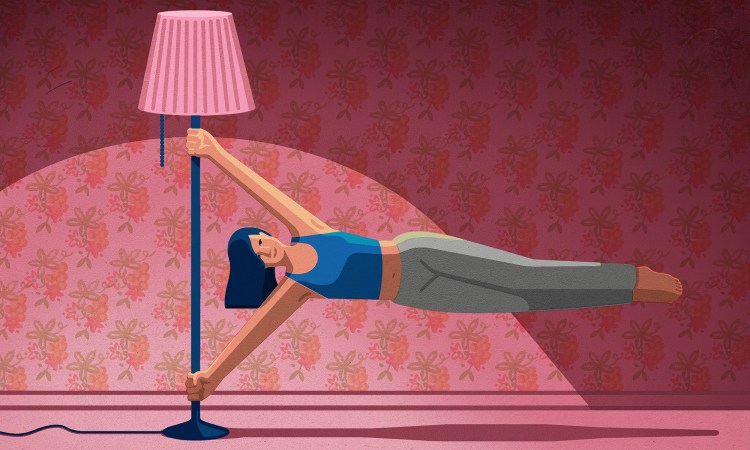
This post is part of TED’s “How to Be a Better Human” series, each of which contains a piece of helpful advice from people in the TED community; browse through all the posts here.
Motivation is not in high supply these days — but ensuring that we move a little bit every day is more important for us than ever, according to Wendy Suzuki PhD, a neuroscientist at New York University.
Dr. Suzuki studies the neurological impacts of exercise, and she says that just a walk around the block or a 10-minute online workout will not only improve your day but also benefit your brain in a lasting way.
“Exercising to increase your fitness literally builds brand new brain cells. It changes your brain’s anatomy, physiology and function,” she explains. “Every time you work out, you are giving your brain a neurochemical bubble bath, and these regular bubble baths can also help protect your brain in the long term from conditions like Alzheimer’s and dementia.”
This sounds great. But it’s hard to turn those long-term benefits into motivation to get up and do something every day.
Start by thinking of exercise — or any movement — as part of your daily routine for caring for your body, like brushing your teeth.
Since most of us are currently in staying-alive-and-keeping-other-people-alive mode, getting toned, losing weight or looking different might not be such useful goals to have right now. Instead, says Dr. Suzuki, the immediate benefits of exercise can serve as more relevant motivators: “It’s really the new way to bring wellness to your brain.” A single workout increases neurotransmitters like dopamine, serotonin and noradrenaline, and these mood boosters can also improve your memory and focus for up to three hours afterwards.
Not only can this help us in our work but it’s also incredibly good for our mental health. In August 2020, Dr. Suzuki informally tested this out with a group of students in one of her NYU classes over Zoom. Participants took a quick five-minute anxiety assessment, and then she surprised them with a 10-minute IntenSati workout. After they exercised, the students took the assessment again.
“What we found is the first time they took that assessment, they were scoring at close to clinical anxiety levels,” she recalls. “After a 10-minute workout, their anxiety scores decreased to normal levels. That is why you need to incorporate these bursts of activity in your day; it helps your mental health and it also helps your cognition.”
So, how much do you need to exercise in order to feel those benefits?
That, says Dr. Suzuki, is the billion-dollar question. Unfortunately, there’s no simple answer: 5 pushups or 10 burpees don’t automatically release a set amount of dopamine. In her 2017 TED Talk, she recommends trying to fit in 30-minute sessions of exercise 3 to 4 times a week.
But the real answer — especially now — is to exercise for as long as you can, ideally doing a little bit every day. “Even a walk can start to give you those neurotransmitter and mood benefits,” she adds.
Many of the positive effects she mentions come from doing cardiovascular exercise — that is, any workout that gets your heart rate up. But even this can be more accessible than it feels. A vigorous session of power vacuuming will get your heart pumping, even if you can’t go for a run. If your building has stairs, take them instead of an elevator.
Even if you start with just a few minutes a day, it’s likely that you will end up increasing what you’re doing over time. That’s what research in Dr. Suzuki’s lab has shown. “The more exercise you do — if you are successful at regularly exercising — the more motivation you gain,” she says. “I don’t want to do it some mornings, but then I remember how good it really feels at the end.”
When is the best time to work out? Similarly, there’s no need to be too prescriptive with timing, according to Dr. Suzuki. As she puts it, “Anytime you feel like working out? Work out. That will be beneficial to you. So whenever you find time, just do it, especially if you’re a parent with young children.”
Her personal approach is to exercise in the mornings, so she can bring those cognitive benefits into her work day. But if you find you’re most productive in the evenings, it might be a good time for you. “Try to enhance the natural tendency you know you have,” advises Dr. Suzuki.
That sounds great, but what if you live in a small apartment with two kids and your neighbors will complain if you do burpees at 10PM?
That’s where online fitness comes in. Embrace all the available options, and find the ones that work best for your situation, both in length and type of exercise. “It’s not weird to work out in your living room,” she says. “It’s great. It’s so convenient. I love it!”
One of the most prolific areas of online fitness is on TikTok, where many coaches and personal trainers are sharing workouts for all body types and living situations.
Justin Agustin, a personal trainer based in Montreal, Canada, has been offering short workouts that don’t require special equipment or choreography.
Here are three with great exercises to do at home. They’re perfect for people working out in small indoor spaces who want a short fitness break (and you can find dozens more on his TikTok):
@justin_agustin He’s an alternative to running 🏃♂️ if you want to stay indoors #cardio #homeworkout #beginnerworkout
@justin_agustin Low-impact silent cardio workout for beginners! #beginnerworkout #cardio #apartmentworkout
@justin_agustin Indoor cardio with beginner and advanced options with @kathleen_jd #beginnerworkout #indoorcardio #couchworkout
Watch Wendy Suzuki’s TED Talk here:















